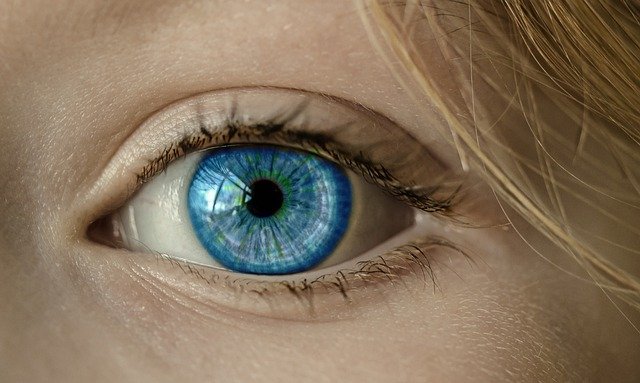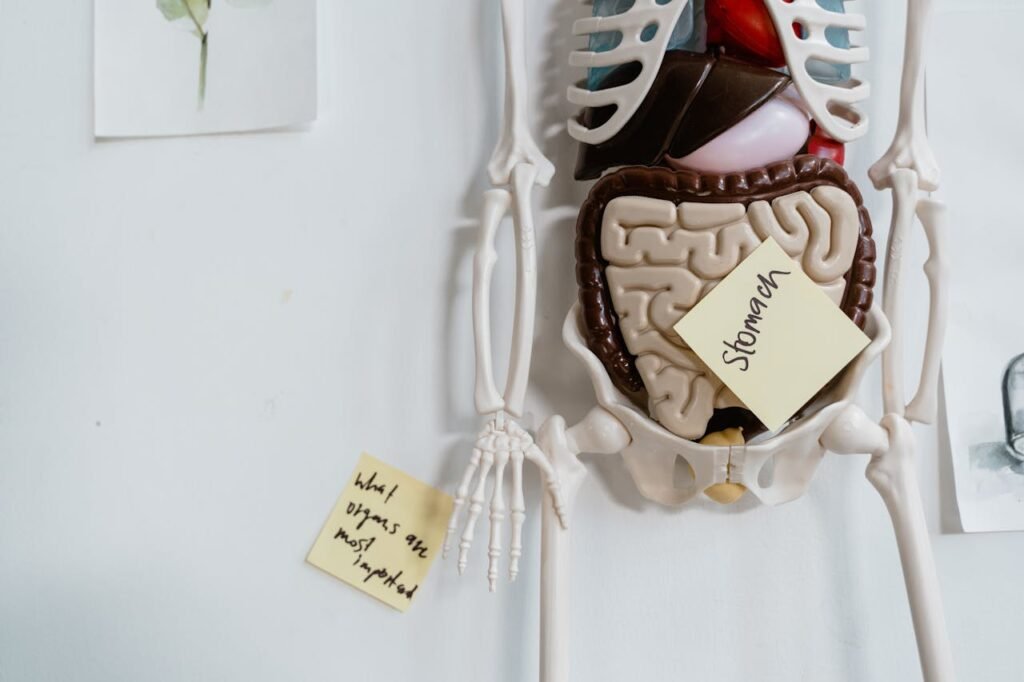Imagine waking up in the morning. You open your eyes and see the sunlight. You hear birds singing outside your window. You smell breakfast cooking in the kitchen. You taste your toast. You feel the soft blanket wrapped around you.
All of this happens through your five senses — seeing, hearing, smelling, tasting, and touching. These senses help you understand the world around you. They also help keep you safe, happy, and curious.
In this article, we’ll go on a journey through each of the five senses. You’ll learn how they work, why they matter, and what parts of your body make them happen. We’ll keep everything super simple, easy to understand, and a little bit magical — because your body really is amazing.
Let’s start this fun adventure into the science of senses — one step at a time.
How We See – The Sense of Sight
Your eyes are like tiny cameras, always open and watching. They take in light, color, shapes, and movement, then send all that information to your brain — so you can understand what you’re looking at.
But how does this really happen? Let’s break it down, step by step.
Light Is the First Step
Everything you see starts with light. Light bounces off objects and travels into your eyes. Without light, your eyes can’t see anything — that’s why it’s hard to see in the dark.
When light enters your eye, it goes through a clear window at the front of your eye called the cornea. The cornea helps bend the light so it can travel deeper inside.
Next, it goes through the pupil — the little black circle in the center of your eye. Your pupil gets bigger or smaller depending on how much light is around. If it’s dark, it opens wide. If it’s bright, it shrinks to protect your eyes.
Inside the Eye – Where the Magic Happens
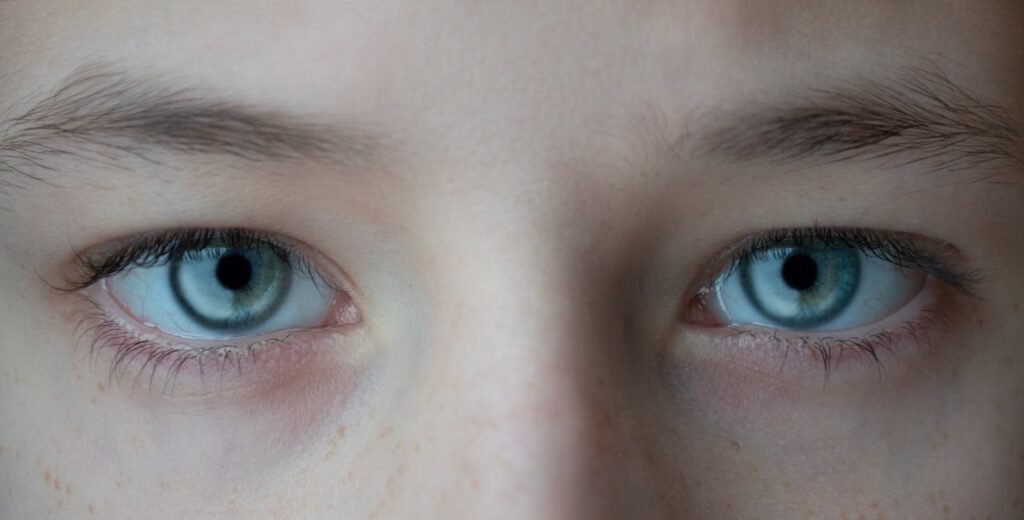
Behind your pupil is a clear lens, which focuses the light — kind of like zooming in with a camera. It bends the light just right so it lands on the back wall of your eye, called the retina.
The retina is very special. It’s full of light-sensitive cells called rods and cones:
- Rods help you see in low light and see shapes.
- Cones help you see color and fine details.
The retina collects all the light and turns it into electrical signals. Then it sends those signals through a special cord called the optic nerve, straight to your brain.
Your Brain Does the Final Work
Even though your eyes take in the light, it’s your brain that actually tells you what you’re seeing. It takes those signals from your eyes and turns them into images: a cat, a book, a tree, a rainbow.
This whole process happens in less than a second — every time you blink, look, or glance around!
Seeing Helps You Learn and Stay Safe
Your eyes help you:
- Read and study
- Play and explore
- Notice danger, like a ball flying toward you
- Enjoy beauty, like flowers or the stars
They’re small, but they do a big job — and they work with your brain as a perfect team.
How We Hear – The Sense of Sound
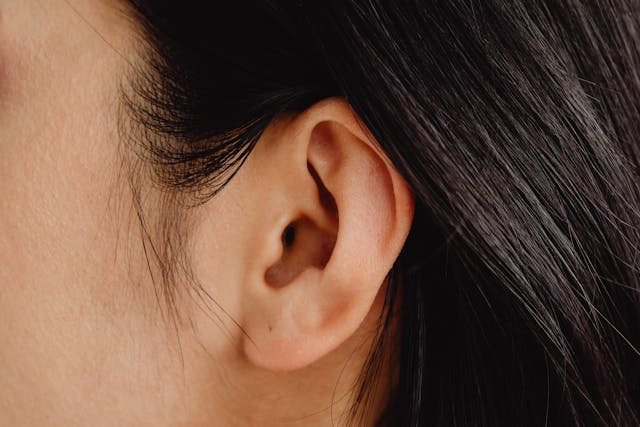
Close your eyes for a moment and listen. You might hear the wind outside, someone talking, or even your own breathing.
Hearing lets you pick up sounds around you. It helps you understand what’s happening, enjoy music, learn new things, and feel safe. But how do your ears do all that?
Let’s take a journey inside your ears and see what’s going on.
Sound Is Just Vibration
Sound starts when something moves or shakes — that’s called a vibration. These tiny movements make waves in the air. Even though you can’t see them, these waves are everywhere.
When these sound waves reach your ear, they go through a special path made just for hearing.
The Outer Ear Catches the Sound
Your ear has three parts — and the first one is the part you can see.
Your outer ear is shaped like a cup. It catches sound waves and guides them into your ear canal, like a tunnel. At the end of that tunnel is a thin, stretchy skin called the eardrum.
When sound waves hit the eardrum, it starts to vibrate, just like a drum!
The Middle Ear – Tiny Bones That Move
Behind the eardrum is the middle ear, and inside it are the smallest bones in your body — they’re even smaller than a pea!
These bones are called the:
- Hammer
- Anvil
- Stirrup
When the eardrum shakes, these bones move too. They pass the vibrations along and make them stronger, like turning up the volume.
The Inner Ear – Where Sound Becomes Signals
Next, the vibrations go to the inner ear, which has a special spiral-shaped part called the cochlea (say: COKE-lee-uh). It looks like a tiny snail!
Inside the cochlea are tiny hair-like cells that move when the vibrations reach them. These cells change the vibrations into electrical signals.
These signals travel through the auditory nerve to your brain.
Your Brain Hears the Sound
Your brain gets the signals and turns them into something you understand — like music, speech, or your friend calling your name.
So even though your ears collect the sound, your brain is what actually lets you hear.
Why Hearing Is So Helpful
Hearing helps you:
- Understand people when they talk
- Enjoy music and stories
- Notice when something’s happening behind you
- Stay safe — like hearing a car horn or fire alarm
It’s one of the first ways babies learn to talk — by listening to others first.
How We Smell – The Sense of Smell

Take a deep breath through your nose. Can you smell anything? Maybe food cooking, fresh air, or even something not-so-nice? That’s your sense of smell at work.
Smell is a quiet but powerful sense. It helps you enjoy meals, notice danger, and even remember special times in your life — all through your nose.
Air Carries Smells
Smells start as tiny particles in the air — way too small to see. When you breathe in through your nose, those tiny smell particles travel inside and land on a special area called the olfactory patch.
This patch is way up inside your nose, just below your brain. It’s small, but packed with smell detectors — tiny cells that catch different kinds of scents.
These Smell Cells Send Signals to Your Brain
Once those smell cells catch the scent, they send messages straight to your brain through the olfactory nerve.
Your brain quickly figures out:
- What the smell is
- If it’s something safe (like fresh bread)
- Or if it’s something dangerous (like smoke or spoiled food)
This all happens in seconds — often before you even think about it.
Smell and Memory Are Best Friends
Have you ever smelled something that made you remember a place or a person?
That’s because the part of your brain that understands smells is very close to your memory center. So certain smells — like cookies baking, or a parent’s perfume — can bring back memories almost instantly.
This makes smell not just useful, but also emotional and meaningful.
Smell Helps You Taste, Too
Here’s something cool: most of what you taste is actually connected to your sense of smell.
That’s why food tastes dull when you have a cold. Your tongue can taste sweet, salty, sour, and bitter — but all the special flavors (like pizza, mango, or chocolate) come from your nose.
Smell adds the flavor magic to your meals!
Why Smell Matters Every Day
Your sense of smell helps you:
- Enjoy and explore different foods
- Notice when something’s burning or unsafe
- Connect with memories and emotions
- Tell when something is clean or dirty
- Feel comforted (like by a parent’s familiar scent)
Even though it’s quiet, smell is one of the most powerful senses your body has.
How We Taste – The Sense of Taste
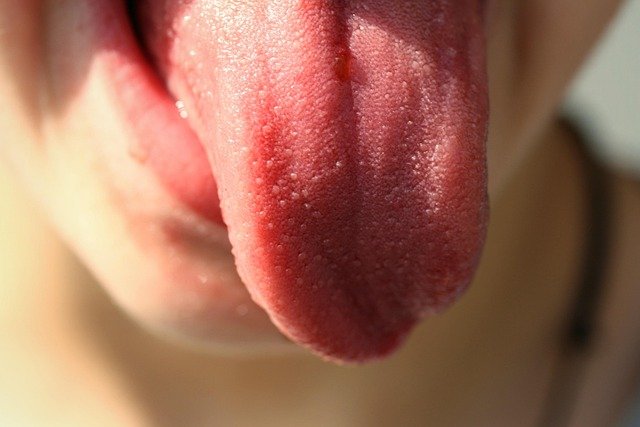
Imagine biting into a juicy orange. You taste the sweet and sour juice. Or think about licking an ice cream cone. So cold, so creamy, so full of flavor.
All these yummy feelings come from your sense of taste — which lives mostly on your tongue.
But tasting is more than just eating. It helps your body figure out what’s good for you, what to enjoy, and what to avoid.
Your Tongue Is Covered in Taste Buds
If you stick out your tongue and look in the mirror, you’ll see little bumps. Those bumps are where your taste buds live.
You have thousands of taste buds on your tongue. Each one has special taste cells that help you detect flavors.
These taste buds can sense five main tastes:
- Sweet – like fruit or candy
- Salty – like chips or crackers
- Sour – like lemons or vinegar
- Bitter – like black coffee or some leafy greens
- Umami (say: oo-MAH-mee) – a meaty or savory taste, like cheese or broth
Each taste tells your brain something important about what you’re eating.
How Taste Buds Send Messages
When food touches your tongue, your taste buds pick up the flavor and send a message to your brain. That’s when you know what you’re tasting.
Your brain quickly figures out:
- “Mmm, this is sweet and yummy!”
- Or “Whoa, this is too sour!”
And if something tastes really bad or bitter, your body might spit it out — it’s a way to protect you from things that might be unsafe.
Smell + Taste = Full Flavor
Here’s something amazing: most of what you “taste” actually comes from your sense of smell.
When you chew, little scent particles go up into your nose through a tiny opening at the back of your throat. Your brain mixes smell and taste together — and that’s how you get the full flavor of a slice of pizza or a bowl of strawberries.
That’s why food tastes plain when your nose is stuffed up!
Why Taste Is Important
Taste helps your body:
- Enjoy food and know when you’re full
- Choose healthy things that give you energy
- Avoid things that are too old or spoiled
- Connect meals with happy memories
Taste is about fun, safety, and enjoyment — all rolled into one bite.
How We Touch – The Sense of Touch

Close your eyes and run your fingers across something near you — maybe your clothes, your hair, or the surface of a table.
You can feel if it’s soft, hard, warm, cold, bumpy, or smooth. That’s your sense of touch at work.
Your skin isn’t just a cover — it’s a smart, super-sensitive part of your body. It’s packed with special cells that help you feel and respond to everything you come in contact with.
Your Skin Has Tiny Touch Receptors
Your body is covered in skin, and inside your skin are millions of tiny sensors. These sensors are called receptors, and each one has a job.
Some receptors sense:
- Pressure (when something presses against your skin)
- Temperature (hot or cold)
- Pain (sharp, itchy, or burning)
- Texture (rough, smooth, wet, dry)
These receptors are especially sensitive in certain areas — like your fingertips, lips, and face — which is why you feel more with those parts.
Your Nerves Send Messages to Your Brain
When you touch something, those skin sensors send messages through your nerves all the way to your spinal cord, and then up to your brain.
Your brain then tells you:
- “That’s hot! Pull your hand away.”
- “That’s soft and nice — keep holding it.”
- “That hurts — let’s be careful next time.”
This all happens in a split second — to help keep you safe and aware of your surroundings.
Touch Helps You Connect and Learn
Touch isn’t just for safety — it also helps you learn and feel loved.
- Babies use touch to learn about the world before they can talk or walk.
- Hugs, hand-holding, and cuddles make you feel safe and cared for.
- Feeling things helps you explore — like knowing how sticky slime is or how sand slips through your fingers.
Touch helps your brain build memories, emotions, and understanding of the world — just like seeing and hearing.
Why Touch Matters Every Day
Touch helps you:
- Know when to protect your body (from heat, cold, sharpness)
- Enjoy comfort and kindness (like hugs or pets)
- Understand objects and materials
- Feel calm and focused
It’s one of the most emotional senses, too. A caring touch can make you feel better instantly — without saying a word.
How the Five Senses Work Together
Your five senses — sight, hearing, smell, taste, and touch — may each have their own job, but they don’t work alone. They’re a team. They share what they discover with your brain, and together they help you understand the world in full color, full sound, full feeling — every second of the day.
Everyday Moments, Full of Senses
Imagine this: You walk into your kitchen and something smells delicious. You see warm cookies just out of the oven. You hear the clinking sound of a tray. You feel the warm air on your face. Then you take a bite and taste sweet, soft, warm goodness.
That wasn’t just one sense at work — it was all five, teaming up. Each one gave your brain a little clue, and your brain put all the clues together to tell you, “Yum, this is a fresh cookie, and it’s safe and wonderful.”
This happens all the time. Your senses help you live more fully, even when you’re not thinking about it. That’s the power of teamwork.
The Brain Puts It All Together
Even though your eyes see, your ears hear, and your hands feel, it’s your brain that makes sense of it all. Your brain gets messages from your senses and turns them into a full, rich picture of what’s happening around you.
If your eyes see a ball rolling, your ears hear someone shout, and your hands feel the air shift, your brain combines all that to say, “A game is starting!” Your brain takes every little piece from each sense and turns it into one big understanding.
Learning Becomes Easier With Sensory Teamwork
When you use more than one sense at the same time, your brain remembers better. That’s why kids learn faster when they hear, see, and touch all at once.
Think about learning a new letter. If you just hear the letter name, you might forget it. But if you say it out loud, trace its shape with your finger, and look at a picture that starts with that letter — you’re using your voice, your touch, your sight, and maybe even your ears all at once. And suddenly, the letter sticks in your mind.
At Debsie, we use this kind of learning in every lesson — because kids learn better when their whole body and brain are involved.
Senses Keep You Safe, Too
Your senses don’t just help you enjoy things — they also protect you. When your hand touches something hot, your skin sends a fast message to your brain: “Too hot!” You pull your hand away before even thinking. That’s teamwork between touch and the brain.
Or if you’re outside and hear a dog bark while seeing it run toward you, your senses are alerting your brain: “Pay attention!” It helps you stay aware and react fast.
Senses are not just fun — they are smart and strong, too.
Feeling More Through the Five
Sometimes, your senses help you feel comfort and calm. A hug, for example, isn’t just soft and warm. It also smells like someone you love. It may come with a kind voice. All those signals work together to say: “I feel safe here.”
Even small things — like feeling sand under your feet at the beach, smelling sunscreen, hearing the waves, seeing the sunlight — make memories stronger because your senses all joined in.
Working together, your senses don’t just help you explore — they help you understand, feel, and remember. They make life clearer, brighter, and more exciting. That’s why learning about the senses is so important — and so magical — especially when it’s done the Debsie way.
How Debsie Makes Learning About the Five Senses Fun and Real

Most kids don’t fall in love with science by reading a textbook. They fall in love with it when they touch it, taste it, smell it, see it, and hear it for themselves. That’s why at Debsie, our approach to teaching the five senses is rooted in real experiences, play-based learning, and everyday wonder.
We don’t just tell kids about the senses — we help them explore, question, and live them.
1. Kids Use Their Senses to Learn About Their Senses
At Debsie, learning is never just about listening. It’s about doing.
Each sense becomes a full experience:
- Kids draw what they see after looking at an object closely with one eye closed, then with both open.
- They close their eyes and try to guess what’s in their hand just by touch — learning the power of skin and texture.
- We guide them to sniff and guess different safe scents (like vanilla, lemon, or mint) and describe how it makes them feel.
- In sound games, they listen to everyday noises and guess what made them — while learning about vibrations and pitch.
- With parent help, they taste small samples — sweet, sour, salty, bitter — and learn how the tongue and nose work together.
This makes learning deeply personal. Kids use their own bodies as their tools — and that makes the science feel real, not just remembered.
2. Everyday Things Become Learning Tools
Debsie teachers show kids how the world around them is already a science lab. You don’t need fancy equipment to learn about your senses — just curiosity and a little guidance.
We use:
- Spoons, ice cubes, fruits, spices, mirrors, paper, music, and shadows.
- “What happens if…” questions to spark discovery.
- Observation exercises — like “Let’s sit quietly and listen for 30 seconds. What did you hear?”
These activities are fun — but they also teach important thinking skills. Kids start to observe more, question more, and connect more with the world around them.
3. Stories That Make It Stick
Debsie teachers turn the five senses into stories. We might say:
- “Imagine you’re a piece of toast and you want to get to the brain. How will each sense help you along the way?”
- Or we create characters like Captain Cone (who helps with color vision) or Detective Ear who follows sound clues.
Kids remember stories. They connect with characters, and they use imagination to deepen understanding.
This storytelling approach helps make the science of the senses feel playful and meaningful — not heavy or confusing.
4. Questions That Kids Actually Ask
Debsie isn’t about dumping facts. It’s about answering questions like:
- “Why do things taste weird when I have a cold?”
- “How come I can hear someone even if I don’t see them?”
- “Why do onions make me cry?”
- “Why can I feel tickles but not my hair growing?”
We encourage kids to ask anything — and our teachers are trained to respond in ways that are gentle, honest, and easy to understand.
This open-question approach makes kids feel safe, respected, and engaged.
5. Confidence Through Curiosity
When a child learns how their eyes work, or why their tongue can taste sweetness, something amazing happens — they feel proud. Not just because they know a fact, but because they understand something about themselves.
That’s what Debsie really teaches: not just science, but self-understanding, focus, observation, and confidence.
By turning the five senses into something fun and personal, we help kids become better thinkers, better learners, and more curious that helps in learning.
Final Thoughts: Your Senses, Your Superpowers
You use your five senses every single day — to see the sunlight, hear your favorite song, smell dinner cooking, taste your favorite snack, and feel a soft hug. These senses are not just tools. They’re your body’s way of learning, exploring, connecting, and staying safe.
Each sense has its own special job, but together, they make life richer, clearer, and more full of meaning. Whether you’re biting into a juicy apple, jumping in a puddle, or whispering to a friend, your senses are right there with you — working together like the best team in the world.
At Debsie, we believe that when kids understand how their senses work, they understand how their whole body works. And when they know how their body works, they feel confident, curious, and in control of their learning.
We don’t just teach facts. We bring science to life. Our teachers make every class feel like an adventure — where wonder turns into real knowledge, and fun becomes the fuel for deep, joyful learning.
🌟 Is your child ready to explore the science inside them?
🎓 Book a free class today and watch their curiosity come alive: https://debsie.com/courses
Read Next:
